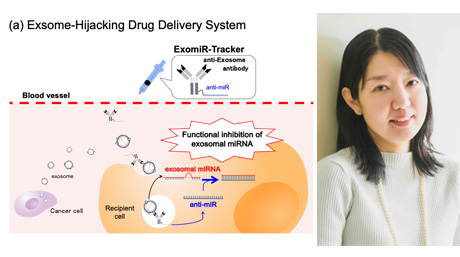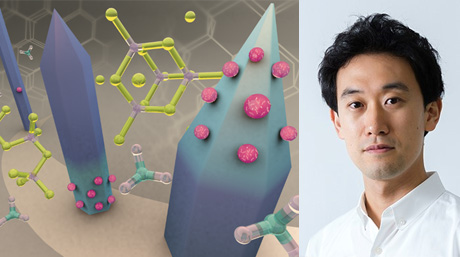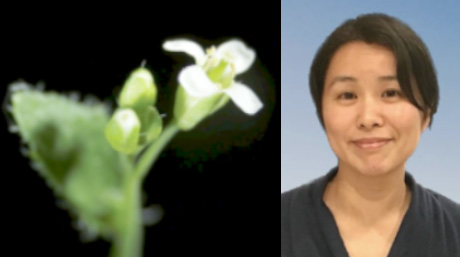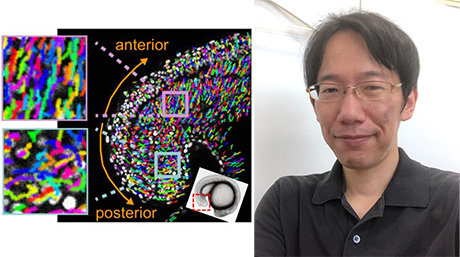Life Science and Technology News
【Labs spotlight】 Naoyuki Yamamoto Laboratory(~2024.3)
The Department has a variety of laboratories for Life Science and Technology, in which cutting-edge innovative research is being undertaken not only in basic science and engineering but also in the areas of medicine, pharmacy, agriculture, and multidisciplinary sciences.
This "Spotlight" series features a laboratory from the Department and introduces you to the laboratory's research projects and outcomes. This time we focus on Naoyuki Yamamoto Laboratory.
*March 31, 2024:Professor Yamamoto retired from Tokyo Tech.

Life Science and Technology
Professor Naoyuki Yamamoto![]()
| Degree | PhD 2002 Tokyo Institute of Technology |
|---|---|
| Areas of Research | Molecular biology, Microbiology, Functional food technology |
| Keywords | Functional food materials, probiotics, lactic acid bacteria |
| WebSite | Yamamoto Labs |
Research interest
In our laboratory, we are trying to search various kinds of functional food materials act on our health. Especially, we focused our study on peptides and probiotic bacteria, such as lactobacilli. Throughout the research, we aim to apply our basic technologies for industrial use. Currently, we are also trying to find novel sensing molecules likely exist on gut which may be crucial to promote our health and be also useful for the development of functional materials in the future.
Functional peptides
Protein hydrolysates which are important for our nutrients and also have potential for various functions for our health. In our study, antihypertensive peptides, Val-Pro-Pro and Ile-Pro-Pro, were released by the proteolytic actions of Lactobacillus helveticus strain. Mechanism study revealed accumulations of both peptides into lung and aorta of spontaneously hypertensive rats after oral administrations of the peptides (Fig left). Especially, both peptides were accumulated in endothelial cells of aorta (Fig right). Moreover, the accumulated peptides suggested the inhibition of angiotensin I-converting enzyme activity in aorta to reduce blood pressure and potential for the reduction of blood coagulation and improvement of arterial stiffness (Fig below).
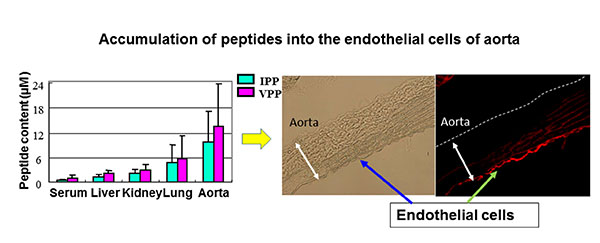
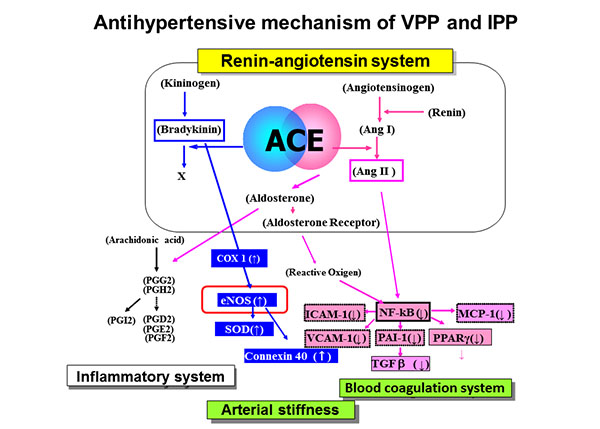
Metabolism of lactobacilli
Specific cell components displayed on Lactobacillus strain need for the interactions with host cells to promote our health are studied in more detail. Throughout these studied, we tried to understand the importance of the specific compounds and use them to select novel functional materials. For example, we clarified proteolytic system of L. helveticus to produce the antihypertensive peptides, VPP and IPP. We also discovered a novel regulatory system of the proteolytic system (BCARR) by amino acids (Fig). Release of the long peptide containing VPP and IPP sequences by an extracellular proteinase (I), uptake of the long peptide via oligopeptide transporter (II), intracellular processing of the peptides to amino acids by peptidases (III), BCARR-BCAA complex formation (IV), binding of the complex (CBS domain) to the BCARR-box and repression of proteolysis gene transcription (V).
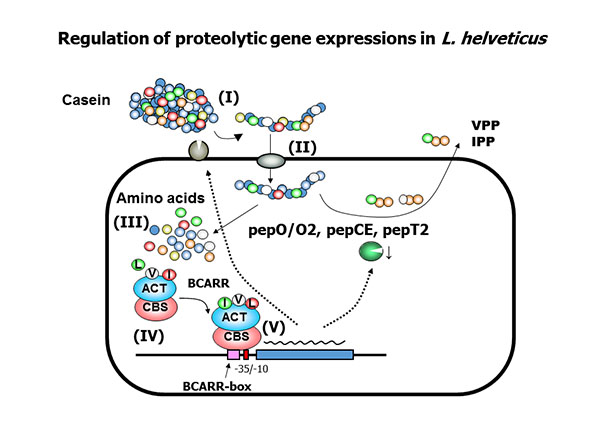
Probiotics
Intestinal microbes are well known for their interaction with our intestine, however, little is known about the role of the microbes in our gut and key components involved in their communications. Many health benefits of lactic acid bacteria have been reported so far, and are applied for the food, medicine, and feed stuff. In our previous study, we successfully selected a Lactobacillus strain with an ability to reduce the serum IgE based on the animal model sutudy. It showed significant improvements of various allergy symptoms in some clinical studies. Detailed mechanism study revealed that the strain might access to dendritic cells after uptake into M cells in gut. Key components in the Lactobacillus strain need for the binding to M cells were also identified. The binding of the Lactobacillus strain to M cells is essential process to activate gut immune system (Fig below). Now, we are trying to compare the immunostimulation effects with other Lactobacillus strains.
Novel sensing molecules
Various digestive and absorption systems play important roles for the uptake of many kinds of nutrients in our gut. Moreover, there are immune system, endocrine system and nerve system as more functional systems. However, little is known about the detailed roles and key molecules involved in these systems. So, we are searching novel sensing molecules likely exist on the gut and need to promote biological function. We would like to find various novel functional food components by using of novel sensing system.
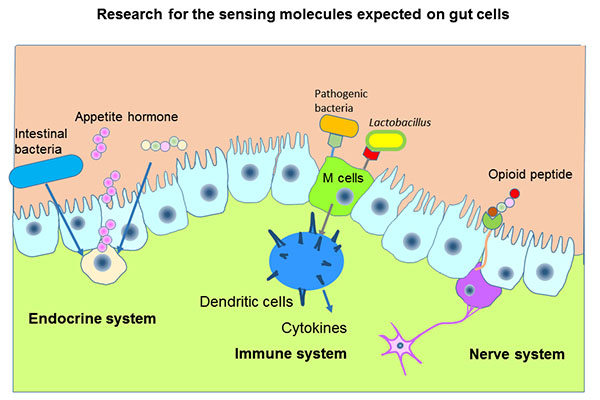
Research findings
- <Functional peptides>
- [1] Matsuura, K., Gotou, T., Kawaguchi, K., Mizuno, S., and Yamamoto, N. (2017) Release of antihypertensive peptides, Val-Pro-Pro and Ile-Pro-Pro, in Blue, Dutch and Swiss cheeses, Milk Science, 66: 97-106.
- [2] Yamamoto, N. (2016) Value added milk by lactic acid bacteria fermentation. Milk Science. 65: 211-217.
- [3] Nakamura, T., Hirota, T., Mizushima, K., Ohki, K., Naito, Y., Yamamoto, N. and Yoshikawa, T. (2013) Milk-derived peptides, Val-Pro-Pro and Ile-Pro-Pro, attenuate atherosclerosis development in apolipoprotein e-deficient mice: a preliminary study. J Med Food. 16:396-403.
- [4] Kawaguchi, K., Nakamura, T., Kamiie, J., Takahashi, T. and Yamamoto, N. (2012) Accumulation of ACE inhibitory tripeptides, Val-Pro-Pro and Ile-Pro-Pro, in vascular endothelial cells. Biosci Biotechnol Biochem. 76:1792-1795.
- [5] Nakamura, T., Mizutani, J., Ohki, K., Yamada, K., Yamamoto, N, Takeshi, M. and Takazawa, K. (2011) Casein hydrolysate containing Val-Pro-Pro and Ile-Pro-Pro improves central blood pressure and arterial stiffness in hypertensive subjects: a randomized, double-blind, placebo-controlled trial. Atherosclerosis. 219:298-303.
- [6] Kurosawa, M.T., Nakamura, Y., Yamamoto, N., Yamada, K. and Iketani, T. (2011) Effects of Val-Pro-Pro and Ile-Pro-Pro on nondipper patients: a preliminary study. J Med Food. 14:538-542.
- [7] Nakamura, T., Mizutani, J., Sasaki, K., Yamamoto, N. and Takazawa, K. (2009) Beneficial Potential of Casein Hydrolysate Containing Val-Pro-Pro and Ile-Pro-Pro on Central Blood Pressure and Hemodynamic Index. A Preliminary Study. J Med Food. 12:1221-1226.
- [8] Yamaguchi, N., Kawaguchi, K and Yamamoto, N. (2009) Study of the Mechanism of Antihypertensive Peptides VPP and IPP in Spontaneously Hypertensive Rats by DNA Microarray Analysis. European J Pharmacology, 620:71-77.
- [9] Inoue, K., Gotou, T., Mizuno, S. and Yamamoto, N. (2008) Release of antihypertensive peptides by adding of casein during miso paste fermentation. J. Bioscience and Bioengineering. 108:111-115.
- [10] Mizuno, S., Matsuura, K., Gotou, T., Nishimura, S., Kajimoto, O., Yabune, M., Kajimoto, Y. and Yamamoto, N. (2005) Antihypertensive effect of casein hydrolyzate prepared using an Aspergillus oryzae protease in a placebo-controlled clinical study for subjects with high-normal blood pressure and mild-hypertension. British J Nutr. 94:84-91.
- [11] Matuura, K., Mizuno, S., Nishimura, S., Gotou, T. and Yamamoto, N. (2005) Quantitative analysis of antihypertensive peptides, Val-Pro-Pro and Ile-Pro-Pro, in casein hydrolyzate with Aspergillus oryzae protease: an LC-MS method. Milchwissenschaft, 60:24-27.
- [12] Mizuno, S. and Yamamoto, N. (2004) Antihypertensive peptides from food proteins. Research Trends. 1, 43-54.
- <Surface proteins, proteolytic system>
- [1] Yamamoto, N., Wakai, T. (2017) Genome-wide motif predictions of BCAA-box in the amino-acid repressed genes of Lactobacillus helveticus CM4. BMC Microbiology. 17:224:
- [2] Wakai, T. and Yamamoto, N. (2013) A novel branched chain amino acids responsive transcriptional regulator, BCARR, negatively acts on the proteolytic system in Lactobacillus helveticus. PLoS One. 11;8(10):e75976.
- [3] Wakai, T., Shinoda, T., Uchida, N., Hattori, M., Nakamura, Y., Beresford, T., Ross, RP. and Yamamoto, N. (2013) Comparative analysis of proteolytic enzymes need for processing of antihypertensive peptides between Lactobacillus helveticus CM4 and DPC4571. J Biosci Bioeng.115:246-252.
- [4] Wakai, T., Yamaguchi, N., Hatanaka, M., Nakamura, Y. and Yamamoto, N. (2012) Repressive processing of antihypertensive peptides, Val-Pro-Pro and Ile-Pro-Pro, in Lactobacillus helveticus fermented milk by added peptides. J Biosci Bioeng. 114:133-137.
- [5] Gotou, T., Shinoda, T., Mizuno, S. and Yamamoto, N. (2009) Purification and identification of proteolytic enzymes from Aspergillus oryzae capable of the production of the antihypertensive peptide, Ile-Pro-Pro. J. Bioscience and Bioengineering. 107:615-619.
- [6] Yamamoto, N., Shinoda, T., Mizuno, S. (2004) Cloning and expression of an endopeptidase gene from Lactobacillus helveticus CM4 involved in processing antihypertensive peptides. Milchwissenschaft, 59:593-597.
- <Probiotics>
- [1] Yanagihara, S., Fukuda, S., Kanaya, T., Nakato, G., Hanazato, M., Wu, X., Yamamoto, N. and Ohno, H. (2017) Uromodulin-SlpA binding dictates Lactobacillus acidophilus uptake by intestinal epithelial M cells. Int. Immunol. 29:357-463.
- [2] Yanagihara, S., Kato, S., Ashida, N. and Yamamoto, N. (2015) Lactobacillus acidophilus CP23 with weak immunomodulatory activity lacks anchoring structure for surface layer protein. J Biosci Bioeng. 119:521-525.
- [3] Yanagihara, S., Goto, H., Hirota, T., Fukuda, S., Ohno, H. and Yamamoto, N. (2014) Lactobacillus acidophilus L-92 cells activate expression of immunomodulatory genes in THP-1 cells. Bioscience of Microbiota, Food and Health, 33:157-164.
- [4] Goto, H., Sagitani, A., Ashida, N., Kato, S., Hirota, T., Shinoda, T. and Yamamoto, N. (2013) Anti-influenza virus effects of both live and non-live Lactobacillus acidophilus L-92 accompanied by the activation of innate immunity. Br J Nutr. 110:1810-1918.
- [5] Kuwana, R. and Yamamoto, N. (2012) Increases in GroES and GroEL from Lactobacillus acidophilus L-92 in response to a decrease in medium pH, and changes in cytokine release from splenocytes: Transcriptome and proteome analyses. J Biosci Bioeng. 114:9-16.
- [6] Yanagihara, S., Fukuda, S., Ohno, H. and Yamamoto, N. (2012) Exposure to probiotic Lactobacillus acidophilus L-92 modulates gene expression profiles of epithelial Caco-2 cells. J Med Food. 15:511-519.
- [7] Yanagihara, S., Hirota, T. and Yamamoto, N. (2012) Transcriptional response of Lactobacillus acidophilus L-92 after attachment to epithelial Caco-2 cells. J Biosci Bioeng. 114:582-585.
- [8] Hatanaka, M., Nakamura, Y., Maathuis, A.J., Venema, K., Murota, I. and Yamamoto, N. (2012) Influence of Bacillus subtilis C-3102 on microbiota in a dynamic in vitro model of the gastrointestinal tract simulating human conditions. Benef Microbes. 3:229-236.
- [9] Ashida, N., Yanagihara, S., Shinoda, T. and Yamamoto, N. (2011) Characterization of adhesive molecule with affinity to Caco-2 cells in Lactobacillus acidophilus by proteome analysis. J Biosci Bioeng. 112:333-337.
- [10] Ishida, Y., Nakamura, F., Kanzato, H., Sawada, D., Yamamoto, N., Kagata, H., Ohida, M., Takeuchi, H. and Fujiwara, S. (2005) Effect of milk fermented with Lactobacillus acidophilus strain L-92 on symptoms of Japanese cedar pollen allergy: A randomized placebo-controlled trial. Biosci Biotechnol Biochem. 69:1652-1660.
- [11] Ishida, Y., Baudou, I., Kanzato, H. and Yamamoto, N. (2003) Decrease in ovalbumin specific IgE of mice serum after oral uptake of lactic acid bacteria. Biosci Biotechnol Biochem. 67:951-957.
- [12] Shinoda, T., Kusuda, D., Ishida, Y., Ikeda, N., Kaneko, K., Masuda, O. and Yamamoto, N. (2001) Survival of Lactobacillus helveticus CP53 strain in the human gastrointestinal tract. Letters in Applied Microbiology, 32:108-113.
Contact
Professor Naoyuki Yamamoto
Room 1014, J3 building, Suzukakedai campus
E-mail : n-yamamoto@bio.titech.ac.jp

